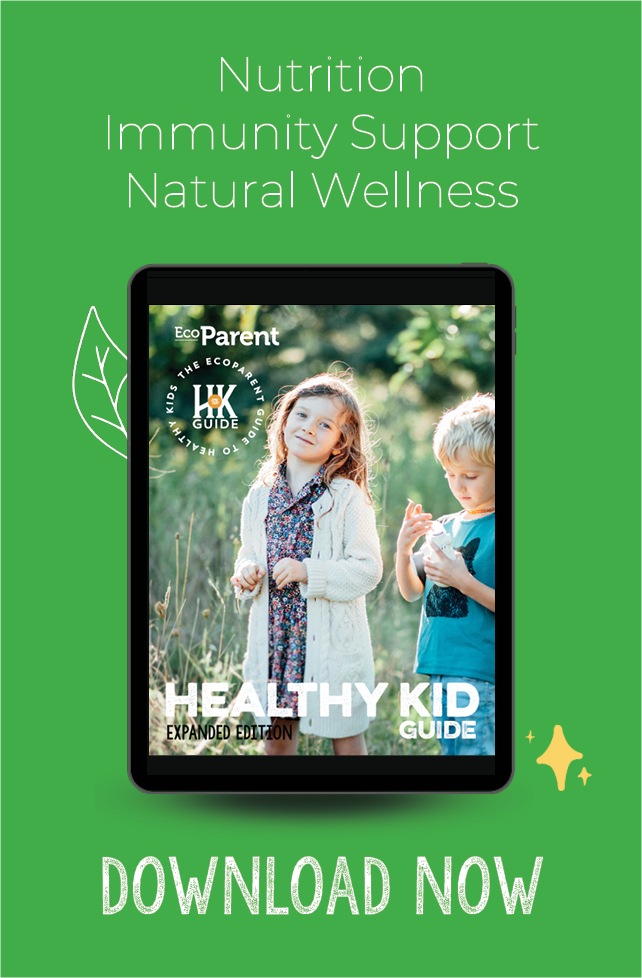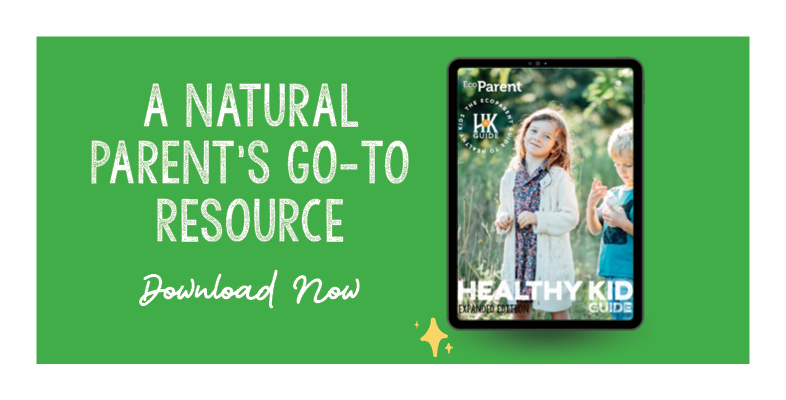Fevers in children are a common concern for parents. While it can be unsettling to see your child with an elevated temperature, it's important to understand that fever is a natural response to an illness. Fevers can be caused by a variety of factors and are typically a symptom rather than the illness itself. Knowing how to approach a fever with calm and informed care can make a significant difference in your child’s recovery, ensuring they stay comfortable while supporting their body’s healing processes.
UNDERSTANDING FEVER
A fever is defined as a rectal temperature of 38°C (100.4°F) or higher or an oral temperature of 37.2°C (99.0°F) or higher. It’s a natural response to infection, signalling that the body is actively fighting off a virus or bacteria. In most healthy children, a fever is not a cause for alarm but rather an indicator of a functioning immune system.1
Debunking Common Fever Myths
Fever is often misunderstood, leading to several myths that can cause unnecessary worry for parents.
Myth #1: A high fever always indicates a serious illness.
Truth: The degree of a fever does not necessarily correlate with the severity of the infection.
Myth #2: Fevers can cause brain damage.
Truth: Brain damage from fever is extremely rare and usually only occurs with very high temperatures (above 42°C or 108°F), which is unlikely without external factors like heatstroke.
Myth #3: Fevers must be treated immediately with medication.
Truth: Fevers often help the body fight infections more effectively. The focus should be on comfort and monitoring rather than aggressively lowering the temperature.
NATURAL FEVER MANAGEMENT
When your child is alert, responsive, and showing only mild symptoms, managing a fever with natural remedies can be a gentle and effective way to support their comfort and recovery.
Hydration
One of the most critical aspects of managing fever naturally is ensuring your child stays well-hydrated. Fever can lead to fluid loss through sweating, which can result in dehydration—especially in younger children.
Dos:
- Encourage your child to drink plenty of fluids, such as water, herbal teas, or clear broths
- For infants, frequent breastfeeding or formula feeding is essential
- Oral rehydration solutions or electrolyte drinks can also help prevent dehydration, especially if your child is not eating or drinking much
- If your child is reluctant to drink, try offering fluids in small, frequent sips or using a straw to make it more fun
Don’ts:
- Don’t give your child sugary drinks, such as juice and pop, or caffeinated beverages, such as coffee, black tea, and energy drinks, as these can contribute to dehydration.
Rest & Comfort
Allowing your child to rest as much as possible during a fever allows the body to focus its energy on fighting off the infection. Ensure your child has a comfortable and quiet environment to rest. Keep the room cool, but not cold, and dress your child in lightweight clothing. Overdressing or using heavy blankets can trap heat and make the fever worse.
Sleep is vital during illness as the body uses this time to repair and recover. Allow your child to sleep as much as they need. If they are having difficulty sleeping due to discomfort, try giving them a lukewarm bath before bed or diffusing calming essential oils, such as lavender, in their room. Using magic warming socks can help as well (discussed later).
Herbal Remedies
Herbal remedies can be a gentle and effective way to support your child's body during a fever. Here are some child-friendly options:
- Peppermint has cooling properties that can help reduce fever by promoting sweating. It’s best given as a tea and can be served either warm or cold. For quick access, steep a large batch ahead of time using 3–4 teabags and store it in the fridge.
- Chamomile is known for its calming properties and can help soothe your child while promoting rest. It’s typically administered as a warm tea but can also be found as a tincture.
- Elderflower promotes sweating, which helps to lower body temperature naturally. It also has antiviral properties and can help boost the immune system. It’s gentle and easy to use as a tea for your child.
- Lemon balm is calming and mildly antiviral, making it a great choice during a fever.4 It can be given as a tea or glycerite tincture.
- Elderberry has antiviral properties and can support the immune system.4 It’s commonly given as a syrup, which is a popular choice for children because of its pleasant taste. The syrup can also be added to warm water to create a warm beverage.
Important note: Always consult with a healthcare provider before giving herbal remedies to children, especially infants and toddlers, to ensure they are safe, appropriate, and given in the correct dose.
Cooling Techniques
While it's important to avoid lowering a fever too rapidly, gentle cooling techniques can help your child feel more comfortable. A lukewarm bath can provide relief by gently cooling the body. Avoid cold baths or ice packs, as these can cause shivering, which may increase body temperature.
Another technique is to use cool compresses. Place a cool, damp cloth on your child's forehead, wrists, or the back of their neck. This can help bring down the fever gradually and provide comfort. Remember to change the compress frequently to maintain its cooling effect.
Dietary Considerations
Focusing on offering your child certain foods while avoiding others will play a significant role in supporting their immune function during fever and infection. It will also help to provide necessary vitamins and minerals while being gentle on the digestive system.
Offer:
- Easily digestible, nutrient-rich foods like soups, broths, mashed fruits or vegetables, and rice
- Fruit high in vitamin C, such as oranges, strawberries, and kiwi
- Foods with natural anti-inflammatory properties, like ginger, garlic, and turmeric
Avoid:
- Heavy, greasy, or processed foods such as fast food, frozen meals, chips, processed meats, deep-fried snacks, instant noodles, or packaged pastries
- Foods high in sugar or added sugar such as sugary cereals, fruit snacks, flavoured yogurts, juice, instant oatmeal, pastries, and desserts
Magic Warming Socks
Magic warming socks are a traditional naturopathic remedy often used to help alleviate fever and congestion. Despite its name, this remedy is not about warming but rather about encouraging the body’s natural healing processes.
- Before bed, ensure your child’s feet are warm. A warm bath or foot bath can help.
- Soak a pair of thin cotton socks in cold water, wring them out, and place them on your child’s feet.
- Cover the wet socks with a pair of dry, thicker wool socks.
- Allow your child to sleep with both pairs of socks on.
During your child’s sleep, the combination of cold and warmth stimulates circulation, helping to draw blood away from the head and toward the feet, which can reduce fever and relieve congestion. As the body works to warm the cold socks, it boosts immune function and promotes a more restful sleep. Despite the initial discomfort of the cold socks, most children find them soothing once they’re on. This remedy is gentle, safe for children of all ages, and free from side effects. It’s not just for children either—parents can find it helpful for themselves too!
WHEN TO SEEK MEDICAL ATTENTION
Most fevers in children can be managed at home; however, parents should be aware of when it is important to call your child’s doctor. The American Academy of Pediatrics recommends seeking medical attention when your child has a fever and any of the following:
- Appears very ill, unusually drowsy, or extremely fussy
- Has been in an overheated environment
- Exhibits severe symptoms like a stiff neck, severe headache, severe sore throat, severe ear pain, unexplained rash, or repeated vomiting/diarrhea
- Shows signs of dehydration (dry mouth, sunken soft spot, fewer wet diapers) and not able to take in fluids
- Has immune system issues, such as sickle cell disease, or cancer, or is on steroid medication
- Experiences a seizure
- Is younger than 3 months (12 weeks) with a temperature of 38°C (100.4°F) or higher
- Has a fever that repeatedly exceeds 40°C (104°F) at any age
THE BOTTOM LINE
Fever can be a worrisome symptom for parents, but it's important to remember that it’s often a sign of the body's natural defence against infection. By focusing on hydration, rest, nutritious foods, and safe natural remedies, you can help your child manage a fever comfortably at home. Always keep an eye on their symptoms, and don't hesitate to seek medical advice if you have concerns. Trust your instincts as a parent, and remember that a balanced approach that combines natural management with professional medical care when needed is the best way to support your child's health.






